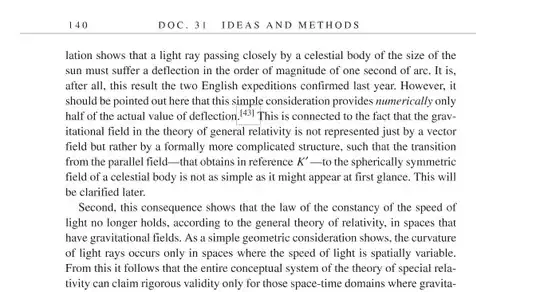In the theory of relativity, a spacetime can have length contractions or length expansions and time can have time dilations or expansions.
In theory of special relativity, any physical object with constant velocity or any inertial coorinate system, can have length contraction and time dilation such that:
$$ (t'/ t_0) = \sqrt[]{1-(v/c)^2} $$
$$ (s'/s_0) = 1/\sqrt[]{1-(v/c)^2}$$
This property is also symmetric between to observers that have relative constant velocity - both observers observe the same phenomena in the other.
and in Genral relativity, for example in the Schwarzschild metric object in the gravitation field has time dilation:
$$ (t'/t_0) = \sqrt[]{1- (2GM/rc^2)}$$
compared to a clock that is far away from the gravitation field.
Usually i have read that these properties belong to the geometry of spacetime. The geometry of the empty space for example follows so called Lorenzt transformations between two origin-centered inertial reference frames, other having relative velocity v other having v= 0 is:
$$ t' = u(t - \frac{vx}{c^2})$$
$$ x' = u(x - vt)$$
$$ y' = y $$
$$ z' = z $$
whwere u is Lorentz gamma factor $$ u = \frac{1}{\sqrt{1-(v/c)^2}} $$
Also the observed local velocity of ligth is always constant for all local observers:
$$ c'= c $$
However, In the gravitation field, different observers do not agree that the velocity of light is constant globally, in large path intervals.
These equations that describe the geometry of spacetime does not yet tell what is the reason why spacetime has this kind of geometry.
1 Is there any theory or insight what is the reason behind these time dilations and length contractions? This has been answered: Lorentz covariance; Lorentz covariance is a property of spacetime that it obeys the Lorentz group transformation equations.
And is there any idea what makes the velocity of light is always constant in empty space?
(these following related questions 2 and 3 are asked to me to better to move under new question:) (edited 22.12.2015)
2 can Lorentz covariance be a result of some kind of dynamical or nondynamical but active process or mechanism that is going on in the spacetime or in space in small length scales and short time scales?** (edited 22.12.2015)
3 Is there another deep explanation what is behind "Lorentz covariance"?** (edited 22.12)
 Public domain image by Mdd4696, see
Public domain image by Mdd4696, see 